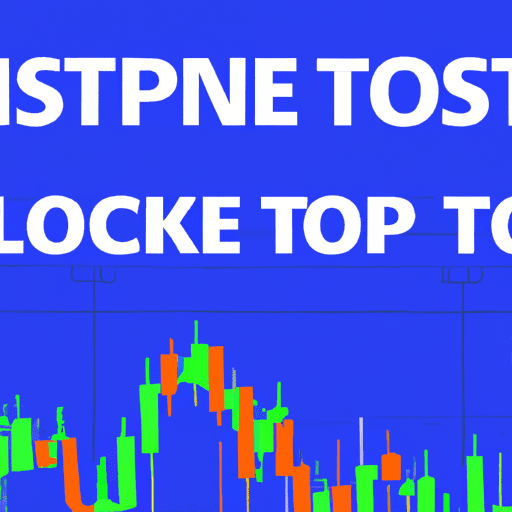Cacino.co.uk Web page Contents
- Introduction
- What is Volatility and How Does it Affect Stock Trading?
- Understanding Volatility: How to Use it to Your Advantage in Stock Trading
- How to Measure Volatility in Stock Trading
- The Pros and Cons of High Volatility in Stock Trading
- Strategies for Managing Volatility in Stock Trading
- How to Identify and Trade Volatile Stocks
- What Causes Volatility in Stock Trading?
- The Impact of Volatility on Risk Management in Stock Trading
- How to Use Technical Analysis to Spot Volatility in Stock Trading
- Exploring the Relationship Between Volatility and Market Sentiment in Stock Trading
- The Role of Options in Managing Volatility in Stock Trading
- How to Profit from Volatility in Stock Trading
- Q&A
- Conclusion
“Maximise Your Income with Volatility – Commerce Smarter with TopSlotSite.com Investors Chronicle!”
Introduction
Volatility in inventory buying and selling is a measure of the quantity of risk related to a specific inventory. It is an necessary issue to think about when making funding decisions- because it can have a big affect on the potential returns of an funding. Volatility can be measured in terms of value actions, quantity, and other components. By understanding volatility, buyers can make more knowledgeable choices about which shares to purchase and promote. This article will present an summary of volatility in inventory buying and selling and the way it impacts buyers.
What is Volatility and How Does it Have an effect on Stock Trading?
Volatility is a measure of the quantity of risk related to a inventory or other security. It is calculated by measuring the value actions of a security over a given time frame. The upper the volatility, the larger the risk related to the inventory. This can have a big affect on inventory buying and selling, as buyers may be more seemingly to purchase or promote a inventory if it has high volatility. High volatility can additionally result in elevated buying and selling exercise, as buyers may be more more likely to make the most of brief-time period value actions. On the other hand, low volatility can result in much less buying and selling exercise, as buyers may be much less more likely to make the most of brief-time period value actions.
Understanding Volatility: The way to Use it to Your Benefit in Stock Trading
Volatility is an necessary idea to grasp when buying and selling shares. It is a measure of how much the value of a inventory fluctuates over time. High volatility signifies that the inventory value can transfer considerably in both path, whereas low volatility signifies that the inventory value is more secure. Realizing the way to use volatility to your benefit can help you make higher buying and selling choices and improve your earnings.
First, it is necessary to grasp the several types of volatility. Historic volatility measures the previous value actions of a inventory, whereas implied volatility measures the anticipated future value actions. Realizing which type of volatility is most related to your buying and selling technique can help you make higher choices.
Second, it is best to contemplate how volatility impacts your buying and selling technique. If you're a protracted-time period investor, high volatility may not be a priority since you aren't searching for brief-time period features. Nevertheless, if you're a brief-time period dealer, high volatility can be useful because it will increase the potential for fast earnings. On the other hand, low volatility can be useful for lengthy-time period buyers because it reduces the risk of enormous losses.
Third, it is best to contemplate the way to use volatility to your benefit when making buying and selling choices. For instance, if you're a brief-time period dealer, you may need to purchase shares with high implied volatility since they've the potential for fast earnings. On the other hand, if you're a protracted-time period investor, you may need to purchase shares with low historic volatility since they're much less more likely to expertise massive losses.
Lastly, it is necessary to keep in mind that volatility is just one issue when making buying and selling choices. You also needs to contemplate other components corresponding to fundamentals and technical evaluation when making buying and selling choices. By understanding the way to use volatility to your benefit and contemplating other components as nicely, you can improve your probabilities of success in inventory buying and selling.
The way to Measure Volatility in Stock Trading
Volatility in inventory buying and selling is a measure of the quantity of value fluctuation in a given security over a time frame. It is an necessary metric for merchants to think about when making choices about when to purchase and promote shares. There are a number of ways to measure volatility, together with the usual deviation, beta, and the typical true vary (ATR).
Customary deviation is a measure of how much the value of a security deviates from its common value over a given time frame. The upper the usual deviation, the more unstable the inventory.
Beta is a measure of how much a inventory's value strikes relative to the general market. A inventory with a beta of 1.0 will transfer in line with the market, whereas a inventory with a beta of two.0 will transfer twice as much because the market.
The typical true vary (ATR) is an indicator that measures the typical day by day vary of a security over a given time frame. The upper the ATR, the more unstable the inventory.
Through the use of these metrics, merchants can get an concept of how unstable a inventory is and make knowledgeable choices about when to purchase and promote.
The Pros and Cons of High Volatility in Stock Trading
Pros:
1. High volatility in inventory buying and selling can result in greater returns. When inventory costs transfer shortly, buyers can make the most of the chance to purchase low and promote high.
2. High volatility can additionally create more buying and selling alternatives. As inventory costs transfer shortly, buyers can make the most of brief-time period tendencies and capitalize on them.
3. High volatility can additionally result in larger liquidity in the market, as more buyers are keen to purchase and promote shares. This can help scale back transaction prices and make it simpler for buyers to enter and exit positions.
Cons:
1. High volatility can additionally result in larger losses if the market strikes towards an investor's place. As inventory costs transfer shortly, buyers may not have sufficient time to react and alter their positions accordingly.
2. High volatility can additionally result in elevated risk, as buyers may not be capable of precisely predict the path of the market. This can result in losses if the market strikes towards an investor's place.
3. High volatility can additionally result in elevated transaction prices, as buyers may must pay greater charges for getting into and exiting positions shortly.
Methods for Managing Volatility in Stock Trading
1. Diversify: Unfold your investments throughout completely different asset courses and sectors to cut back the risk of volatility in anybody inventory.
2. Use Cease Loss Orders: Set a predetermined value at which you'll promote a inventory if it drops beneath a certain stage.
3. Make the most of Options: Options can be used to hedge towards volatility and shield your portfolio from massive losses.
4. Make investments for the Lengthy Time period: Investing for the long run can help scale back the affect of brief-time period volatility in your portfolio.
5. Monitor the Market: Repeatedly monitor the market and keep knowledgeable of news and occasions that might have an effect on inventory costs.
6. Use Technical Evaluation: Make the most of technical evaluation to establish tendencies and make knowledgeable choices about when to purchase or promote shares.
The way to Establish and Commerce Unstable Shares
Unstable shares can be recognized by taking a look at their historic value actions. A inventory is thought-about unstable if its value has skilled massive swings over a brief time frame. To establish unstable shares, buyers ought to have a look at the inventory's beta, which measures the inventory's volatility relative to the general market. Shares with a beta larger than 1 are thought-about more unstable than the market, whereas shares with a beta lower than 1 are thought-about much less unstable.
As soon as a unstable inventory has been recognized, buyers ought to contemplate their risk tolerance and funding objectives earlier than deciding whether or not to commerce it. Unstable shares can be dangerous investments, as their costs can transfer shortly and unpredictably. Nevertheless, they can additionally offer potential rewards if the investor is capable of precisely predict the path of the inventory's value actions.
When buying and selling unstable shares, buyers ought to use cease-loss orders to limit their losses in case the inventory's value strikes towards them. They need to additionally think about using limit orders to ensure that they get the very best value for his or her trades. Lastly, buyers ought to all the time use risk administration methods corresponding to diversification and place sizing to ensure that they don't overexpose themselves to anybody inventory or sector.
What Causes Volatility in Stock Trading?
Volatility in inventory buying and selling is brought on by quite a lot of components, together with financial news, geopolitical occasions, modifications in market sentiment, and the actions of enormous institutional buyers. Financial news can trigger sudden shifts in inventory costs resulting from modifications in investor expectations. Geopolitical occasions can additionally trigger volatility as buyers react to news of wars, political unrest, or other global occasions. Modifications in market sentiment can additionally trigger volatility as buyers turn into more or much less optimistic in regards to the future prospects of a specific inventory or sector. Lastly, massive institutional buyers can trigger volatility once they purchase or promote massive quantities of a specific inventory.
The Impression of Volatility on Threat Administration in Stock Trading
Volatility is a key issue in inventory buying and selling and risk administration. It is the measure of the quantity of value fluctuation of a security over a given time frame. High volatility can result in larger risk, as costs can transfer shortly and unpredictably. On the other hand, low volatility can result in decrease risk, as costs have a tendency to stay comparatively secure.
Threat administration methods should take note of the extent of volatility in order to be efficient. For instance, merchants may use cease-loss orders to limit losses in unstable markets, or they may use options methods to hedge towards potential losses. Moreover, merchants may alter their place sizes to account for the elevated risk related to greater volatility.
In conclusion, volatility is an necessary issue in inventory buying and selling and risk administration. Merchants should pay attention to the extent of volatility in order to successfully handle their risk. Through the use of applicable methods and adjusting place sizes accordingly, merchants can higher handle their risk in unstable markets.
The way to Use Technical Evaluation to Spot Volatility in Stock Trading
Technical evaluation is a strong device for inventory merchants to establish potential volatility in the markets. By analyzing value and quantity information, merchants can spot tendencies and make knowledgeable choices about when to purchase and promote shares. Listed here are some suggestions for utilizing technical evaluation to identify volatility in inventory buying and selling:
1. Monitor Value Motion: Pay shut consideration to the value motion of a inventory. Search for sudden spikes or drops in value, as these can point out a shift in market sentiment.
2. Analyze Quantity: High quantity can point out elevated curiosity in a inventory, which can result in elevated volatility. Conversely, low quantity can point out a scarcity of curiosity, which might result in decreased volatility.
3. Use Technical Indicators: Technical indicators corresponding to shifting averages, Bollinger Bands, and MACD can help merchants establish potential entry and exit factors for trades.
4. Monitor News and Occasions: Control news and occasions that might have an effect on the inventory's value. This might include earnings experiences, mergers and acquisitions, or other market-shifting occasions.
Through the use of the following tips, merchants can use technical evaluation to identify potential volatility in the markets and make knowledgeable choices about when to purchase and promote shares.
Exploring the Relationship Between Volatility and Market Sentiment in Stock Trading
This research examines the connection between volatility and market sentiment in inventory buying and selling. Volatility is a measure of the quantity of risk related to a security, whereas market sentiment is an indicator of investor confidence in the inventory market. By analyzing the correlation between these two variables, we can achieve perception into how buyers understand and react to modifications in the inventory market.
Information was collected from the S&P 500 index over a interval of 5 years. The info was analyzed utilizing regression evaluation to find out the correlation between volatility and market sentiment. The outcomes confirmed that there is a constructive correlation between volatility and market sentiment, indicating that when volatility will increase, investor confidence decreases.
The findings of this research counsel that buyers are more seemingly to be cautious when volatility will increase, as they understand greater ranges of risk related to the inventory market. This implies that buyers ought to pay attention to the potential dangers related to investing in unstable markets and take applicable measures to guard their investments.
The Position of Options in Managing Volatility in Stock Trading
Options are a strong device for managing volatility in inventory buying and selling. They supply buyers with the power to hedge towards potential losses, in addition to to invest on value actions. By shopping for and promoting options, buyers can limit their publicity to market volatility and shield their portfolios from massive losses. Options additionally permit buyers to make the most of brief-time period value actions, permitting them to revenue from market swings with out having to carry a inventory for an prolonged time frame. As well as, options can be used to create artificial positions that mimic the efficiency of shares or other property, permitting buyers to diversify their portfolios with out having to buy a number of property. Through the use of options, buyers can successfully handle their risk and maximize their returns.
The way to Revenue from Volatility in Stock Trading
Volatility in inventory buying and selling can be an important alternative for merchants to make earnings. By understanding the dynamics of the market and profiting from value actions, merchants can capitalize on volatility and improve their returns. Listed here are some suggestions for cashing in on volatility in inventory buying and selling:
1. Monitor the Market: Keeping track of the market is important for any dealer. Monitor news, financial information, and other components that can have an effect on inventory costs. This may help you establish potential alternatives and make knowledgeable choices.
2. Use Technical Evaluation: Technical evaluation is a strong device for analyzing value actions and predicting future tendencies. By finding out charts and indicators, merchants can establish patterns and make knowledgeable choices about when to purchase or promote shares.
3. Make the most of Cease Losses: Cease losses are an necessary risk administration device that can help merchants limit their losses in unstable markets. By setting a cease loss order, merchants can shield themselves from massive losses if the market strikes towards them.
4. Take Benefit of Leverage: Leverage permits merchants to extend their publicity to the market with out having to take a position more capital. This can be a good way to maximise earnings in unstable markets, however it additionally carries a better risk of losses.
By following the following tips, merchants can make the most of volatility in inventory buying and selling and improve their returns.
Q&A
Q1: What is volatility in inventory buying and selling?
A1: Volatility in inventory buying and selling is a measure of the quantity of value motion of a inventory over a given time frame. It is sometimes measured by calculating the usual deviation of the day by day value modifications of a inventory over a given interval. Greater volatility signifies that the inventory's value can change dramatically over brief durations of time, whereas decrease volatility signifies that the inventory's value modifications are more gradual.
Q2: What causes volatility in inventory costs?
A2: Volatility in inventory costs can be brought on by quite a lot of components, together with financial news, firm news, investor sentiment, and market hypothesis. As well as, certain shares may be more unstable than others resulting from their industry or sector.
Q3: How can buyers use volatility to their benefit?
A3: Investors can use volatility to their benefit by profiting from brief-time period value actions. For instance, if a inventory is experiencing high volatility, buyers may be capable of purchase low and promote high in a brief time frame. Nevertheless, buyers also needs to remember that high volatility can additionally result in massive losses if the inventory's value strikes towards them.
This fall: What is implied volatility?
A4: Implied volatility is an estimate of how much a inventory's value is anticipated to maneuver over a given time frame. It is calculated utilizing options costs and is used to gauge investor sentiment a few explicit inventory.
Q5: What is historic volatility?
A5: Historic volatility is a measure of how much a inventory's value has moved over a given time frame in the previous. It is calculated by taking a look at the usual deviation of the day by day value modifications over a given interval.
Q6: What is beta?
A6: Beta is a measure of how unstable a inventory's value is relative to the general market. A beta larger than 1 signifies that the inventory's value is more unstable than the market, whereas a beta lower than 1 signifies that the inventory's value is much less unstable than the market.
Q7: What are some methods for buying and selling unstable shares?
A7: Some methods for buying and selling unstable shares include shopping for on dips, promoting on rallies, utilizing cease-loss orders, and utilizing options methods corresponding to straddles and strangles.
Q8: What are some dangers related to buying and selling unstable shares?
A8: Some dangers related to buying and selling unstable shares include massive losses resulting from sudden value actions, issue predicting future value actions, and elevated transaction prices resulting from frequent buying and selling.
Q9: How can buyers shield themselves from losses resulting from volatility?
A9: Investors can shield themselves from losses resulting from volatility through the use of cease-loss orders and limiting their publicity to anybody inventory or sector. They need to additionally diversify their portfolio throughout completely different asset courses and sectors in order to cut back risk.
Q10: What are some indicators that can help buyers establish unstable shares?
A10: Some indicators that can help buyers establish unstable shares include high beta values, high implied volatility ranges, and huge day by day value actions.
Q11: How does liquidity have an effect on volatility?
A11: Liquidity impacts volatility as a result of it impacts how shortly buyers can purchase or promote shares of a specific inventory. Shares with greater liquidity are inclined to have decrease ranges of volatility as a result of it is simpler for buyers to enter and exit positions shortly with out considerably affecting the value.
Q12: What are some ways buyers can handle risk when buying and selling unstable shares?
A12: Some ways buyers can handle risk when buying and selling unstable shares include utilizing cease-loss orders, limiting their publicity to anybody inventory or sector, diversifying their portfolio throughout completely different asset courses and sectors, and utilizing options methods corresponding to straddles and strangles.
Conclusion
Volatility in inventory buying and selling is an unavoidable a part of the inventory market. It can be a source of each potential earnings and losses. By understanding the dangers related to volatility, buyers can make knowledgeable choices and handle their portfolios accordingly. With the appropriate methods and tools, buyers can use volatility to their benefit and maximize their returns. TopSlotSite.com Investors Chronicle supplies a wealth of information and resources to help buyers navigate the inventory market and benefit from their investments.































































































































